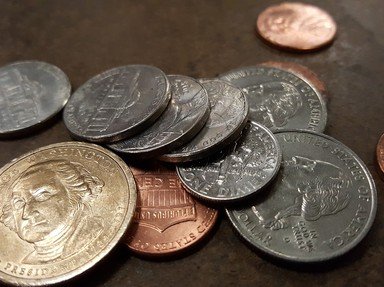Quiz Answer Key and Fun Facts
1. The official name is "cent," but everyone calls it a penny. The word "penny" has its origins in which language?
2. The first American pennies were produced in the late 1700s. They were big, bulky coins, and were expensive and difficult to produce. When did the mint decide to reduce the penny to its present size?
3. The US penny has undergone a lot of changes in its history, but since 1909 the same president has appeared on the obverse (or heads) side of the coin. Who is he?
4. In 1943, the mint started making pennies out of steel coated with zinc. This lasted for only one year. Why did the mint make this change?
5. People didn't like the steel pennies, so in 1944 the mint began making them out of something else. What was it?
6. Another significant change to the penny occurred in 1982. Beginning that year, pennies contain 97.5% of which metal?
7. If the IRS claims you owe $1000 in back income taxes, you can legally pay them with 100,000 pennies.
8. Penny isn't only a coin; it's also girl's name. In 2009, where did Penny rank as a girl's name in popularity?
9. The word "penny" also figures into many common English idioms. For example, "in for a penny, in for a pound." What word completes the following phrase: "A penny for your ____?"
10. Who is given credit for the maxim: "A penny saved is a penny earned?"
Source: Author
daver852
This quiz was reviewed by FunTrivia editor
Leau before going online.
Any errors found in FunTrivia content are routinely corrected through our feedback system.

